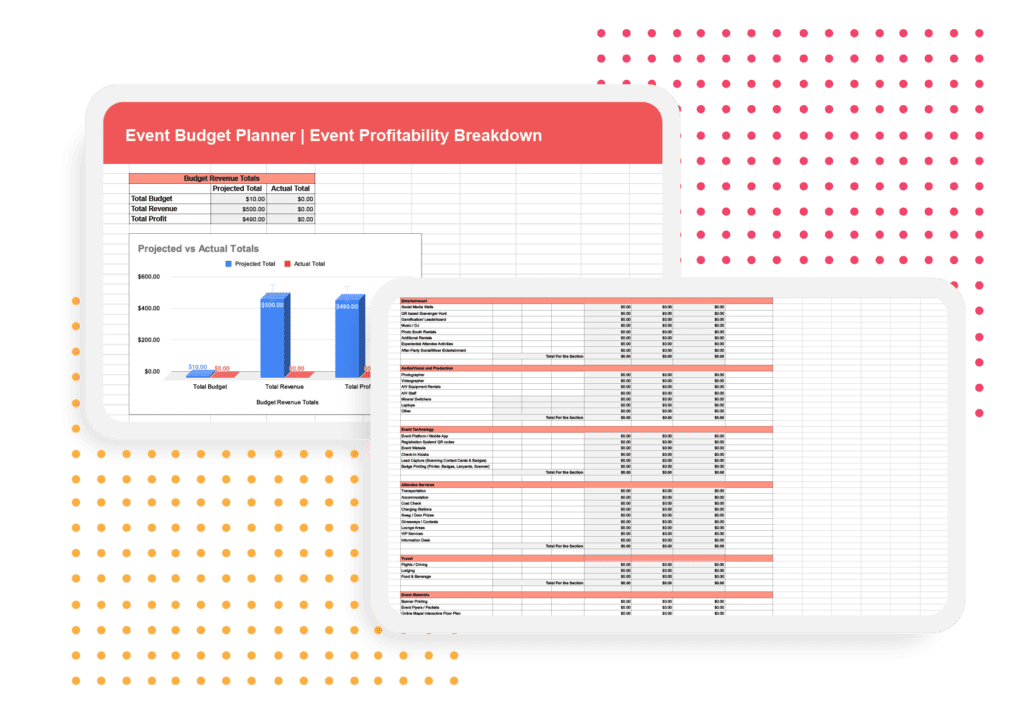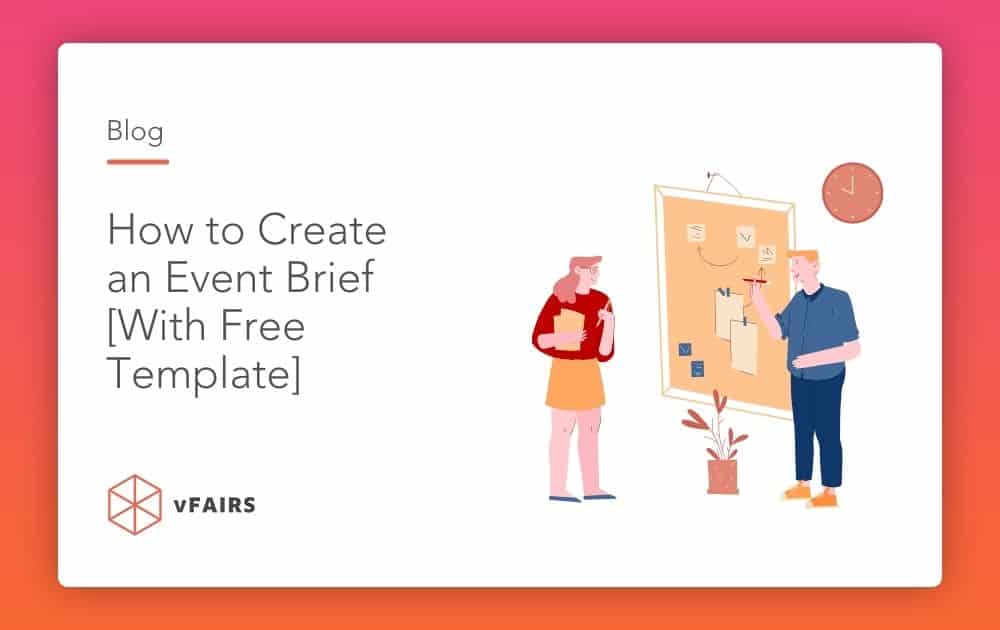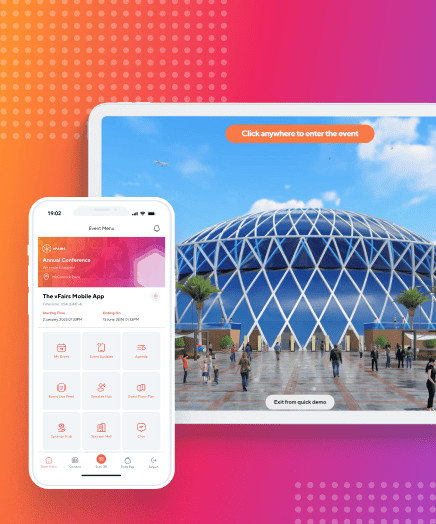Organizing an event is a huge undertaking and requires plenty of planning.
The event brief serves as a map for your events and ensures coordination throughout the event.
Creating an event brief and ensuring the roadmap of your event is shared with the team requires some work. Here is when event management platforms become the best partners for event brief templates to deliver a successful event.
The event brief acts as a blueprint for your event. The brief helps event organizers plan and organize each event stage carefully.
This blog will provide all the details about creating a compelling event brief to execute a smooth event. We have also created a free event brief template for you to download and prepare based on the structure and learning we provided in the article.
What Is an Event Brief and What Are Its Key Features?
A brief event description example is a comprehensive document containing an event’s key elements.
The key features of an event brief include the following:
- Target audience
- Event goals
- Venue selection
- Budget considerations
Why Event Breif Is Important?
An event brief is a blueprint that event planners create to ensure a well-structured approach to the event. It allows every contributing member to stay on the same page and helps them execute a smooth event.
Creating an Event Brief Sample/Template
Creating an event brief is pretty simple.
First, decide on an event brief format. You can choose Google Sheets and create a separate tab for each section of your event brief. You can also build a slide deck with a particular slide for each team.
However, if you use the event brief template we’ve created, you don’t need to create something from scratch. Make a copy and get started!
Now that you have an event brief template let’s walk you through its substantial elements.
Conduct Initial Event Research
To create a compelling event brief, you must start by conducting initial research about your event.
Your research effort should involve collecting relevant information about event venue options, potential sponsors, vendors, etc. Other than this, your research should affect:
- Understanding the event landscape.
- Exploring similar events.
- Studying the successes and failures of those events.
- Explore different aspects of your event, such as audience food choices, to use as a starting point for your event briefing.
Define Event Objectives and Goals
You can’t host an event without clearly defining key objectives and attaching goals to measure the impact of your efforts. Note the goals in your event brief and open them for discussion.
Event objectives vary; however, a few goals are similar in all events, such as raising brand/company awareness, promoting networking opportunities, generating leads, etc.
Defining these objectives on your event brief sample will help you align your event with the desired outcomes. The event planning team with the event brief can work on setting specific, measurable, and achievable goals to track the event’s progress.
Later, when your event ends, you can use these objectives and goals to create a section in your event debrief template. In your event debrief template, you can measure how many event objectives and goals you achieved and which purposes faced challenges.
You can learn more about creating an event debrief by downloading the free event debrief template.
Identify Target Audience and Event Theme
It is crucial to take some time to understand your target audience to create a compelling event brief sample.
In your event briefing, ensure you contribute enough time to understand the attendee’s demographics, interests, and preferences. Collecting relevant information about your audience’s preferences can help you develop an appropriate event theme.
Critical considerations for your theme may include:
The tone of your event: Decide whether you want to make your event wholly professional or if it will be fun or adventurous, etc.
Choose your event’s color palette: Colors can impact your audience’s mind differently. You can use your brand colors or select colors using accessible inspirations online.
Your event’s logo and visual aesthetic: Your event’s logo and visual aesthetics should be reflected consistently throughout your event. For a memorable experience, ensure your company logo and virtual aesthetics are on the registration page and on-site venue for a virtual attendee environment.
To understand how well your event briefing template went to provide the audience with a satisfactory event experience, you can send a post-event survey to your attendees once the event is over.
Ask your attendees the right post-event survey questions, such as how satisfied they are with the e
vent experience and if they will attend your event again. This will help you understand how well your event brief performed.
Establish Event Budget and Timeline

One of the ways to ensure your event goes smoothly is by keeping your event budget under consideration.
In your event briefing, you can discuss how much money you should spend on different event functions. Your event budgeting should include allocating resources to venue rental, marketing, catering, audiovisual equipment, staff, and other additional logistics related to the event.
Speaker fees are also worth mentioning in your event budgeting and briefing sample if your event involves booking speakers. Selecting event speakers can involve many factors, such as how well your speakers can keep the audience engaged or how well-learned they are in the industry for which you are hosting the event. Still, the fees they charge for speaker sessions are also essential to look out for.
Note Down All the Logistical Items Needed in Your Event
Hosting an on-site event involves many steps, activities, and items to manage. All these factors affect logistical considerations, and you can not do them in your head.
Therefore. It is essential to ensure all your logistical items are visible and accessible to track in your event brief sample.
Dedicate a section on your event brief to write down all the details of the logistics of your event. Once these are in the record, you can add status tracking for each item. This way, you can ensure that each of them in your event brief is ordered and placed in a dedicated place.
Some standard logistical items on the event brief include:
- Swags: The event giveaways should be ordered before the event date and are usually given on-site in an in-person event or mailed to virtual attendees beforehand.
- Food: Catered meals for in-person attendees or food deliveries to remote attendees
- Audio/visual equipment: Audiovisual equipment to energize online and in-person attendees
Free Event Brief Template
Download the free event brief template, make a copy, and start your event briefing today!
Download Free Event Brief Template
Key Components to Include in Your Event Brief Sample
Let’s look at each component of an event brief so that you have a better idea of how we have constructed our free event brief template and learn how to write an event program.
Event Overview and Key Information
It would help if you kept the crucial information about your event readily available and visible.
You can do this by reserving the starting section of the event brief for your event’s information.
A common example of key event information includes:
- Event Title: Your event title
- Event date(s): Insert date(s) here
- Event time(s): Insert time(s) here Event run time: X Hours, days, week(s)
- Event format: Virtual, hybrid, or in-person
- Event location: Venue location (as applicable)
- Event management platform: Includes login credentials of the event platform technology you have chosen to host your event with
- Event description: Add your event’s report here.
- Check out some examples for some extra inspiration.
- Event website/registration link: Place your event website here.
Primary Event Resources
To avoid hiccups during your event planning, it is essential to have the entire event planning team on the same page. For this, learning how to write a program for an event is crucial. To help you with this, we have some tips below.
For this, you must create a section in your event brief that includes all the information about your primary event resources.
Be sure to provide all the contributing members of your team with shared documents, files, and folders to ensure everyone is on the same page.
Common examples of shared folders, files, and documents include:
- Event plan and project tracking
- Budget spreadsheet
- Run-of-show document
- Communications plan
- Design asset folder
- Event landing page and registration reports
Key Objectives and Goals
You will put your blood, sweat, and tears into organizing an event to achieve the desired results. However, it is essential to note your event’s key objectives and goals in your event briefing so that they are easily visible and traceable.
Expected purpose-driven outcomes and objectives include:
- Driving brand awareness
- Generating leads
- Attracting new prospective clients
- Training and education for internal and external audience
- Creating engagement opportunities
- Recruiting new employees
Event Budget
Do not spend your fortune on an event. Dedicate a section in your event brief template to event budgeting to ensure your event stays within budget considerations.
In this section, you can include the budget allocated to the entire event spending, details of the expenses, and links to the logistical items.
Standard details for an event budget include:
- Item name: Mention the item’s name clearly; link the corresponding webpage for easy reference.
- Description: Include a summary of the most essential details for all the stakeholders and teammates.
- Projected total: Conduct the necessary research to estimate each item accurately.
- Actual total: You can leave this column blank for your event brief sample. Once you start spending, you can include the total amount spent on each logistical item and need. Make sure to include taxes and shipping charges.
Audience Demographics and Preferences

As we said above, it is essential to research your target audience before hosting an event. An event briefing template is the perfect way to discuss and understand your audience’s interests and preferences and create an event around those.
In this section, you can tap into unique suggestions, ideas, motivations, and needs required to create an event that provides the audience with a satisfactory experience.
This section can include components such as:
- The profession of the target audience
- Regions from where they are attending
- Topics of interest
- Age of target audience
Team Roles and Responsibilities
Dedicate a chunk of your event brief template to write down the roles and responsibilities distributed across your event planning team.
This will ensure that each contributing member knows their responsibilities and deadlines for that particular task.
Common staffing considerations include:
- For on-site staff: event producer, reception/check-in, speaker liaison, lead event manager, sponsor coordinator, and more.
- For virtual staff: speaker liaison, producer, technical sport, chat managers, and more.
Moreover, creating a cohesive team with on-site and virtual support is essential for hybrid events.
A lot more goes into a brief sample, which you can download from here and start with your briefing today. However, we understand that creating an event brief, organizing an event briefing, and jotting down all the relevant details, notes, and recommendations seem highly intimidating.
Fortunately, we live in a time when there is a foolproof solution to skip these responsibilities. An event management software not only takes care of all your event needs, from planning to executing, but even before the event, event management software like vFairs provides a complete event brief and debrief with all the relevant information.
Grab The Desired Outcomes From a Well-structure Event Brief
You have already invested your time, blood, sweat, and tears into organizing an event; you do not want a tiny mishap to mess it up, right?
It is essential to create a compelling event brief sample and send it to all the contributing members of your team to execute a snag-free event.
Or, you can download the free event brief template we created for you and steer clear of chaos, headaches, and all possible challenges with an uncoordinated event setup.
Our free event brief template is structured considering factors such as:
- Built to use across all formats
- Fully customizable
- To be used for all event types, virtual, in-person, and hybrid events.
Download the free event brief template, make a copy, and start your event briefing today!

![How to Create an Event Brief [With Free Template]](https://www.vfairs.com/wp-content/uploads/2024/01/IMG_1388-scaled.jpg)

